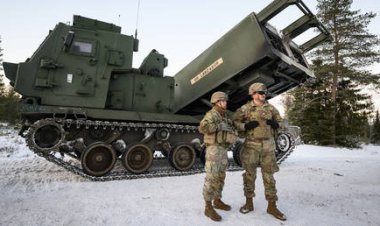Portable Nuclear Batteries? Progress is Being Made, but a Minor Issue Remains
Research is intensifying and showing advancements; however, scaling continues to pose a challenge.

In 1912, Henry Molesey developed the first atomic battery. Molesey, a talented young physicist, tragically lost his life during World War I, an event that Isaac Asimov referred to as "the most costly single death of the war to mankind generally."
Molesey's invention harnessed beta particles released from radium. While this principle shares similarities with nuclear reactors, it operates without triggering a chain reaction.
The atomic era was propelled into action during World War II, with the 1950s seeing efforts to utilize this new energy source in various applications including car engines, hearing aids, and heart pacemakers. Concerns about nuclear technology's potential dangers led to a decline in public acceptance for some uses, but nuclear batteries found success in the space race thanks to their remarkable durability.
Because they rely on the gradual decay of radioactive materials, nuclear batteries can last for decades. Consequently, both the Soviet Union and the U.S. incorporated them in their spacecraft beginning in the 1950s. These batteries remain in operation today, powering equipment such as Mars rovers and deep-space probes. For instance, Voyager I, launched in 1977, still functions after 47 years and 15 billion miles, venturing beyond our solar system.
Voyager's power source is a radioisotope thermoelectric generator (RTG). A small amount of plutonium-238 decays within it, generating heat that is converted into a consistent supply of electricity. While the power output diminishes over time as the plutonium decreases, its half-life of 87.7 years ensures it outlasts even high-end AA batteries.
RTGs, which lack moving components that can wear out, have also powered remote equipment on Earth, including uncrewed lighthouses and Arctic military stations.
What advancements have been made recently?
In 1965, Intel co-founder Gordon Moore introduced a concept known as Moore's Law, observing that the number of transistors in an integrated circuit doubles approximately every two years. The trend of miniaturizing technology has continued, with modern nano-scale innovations making significant strides.
In early 2024, the Chinese startup BetaVolt announced a compact nuclear battery that they claim can function for 50 years. Unlike the RTGs that rely on thermal conversion, this new design represents a non-thermal converter.
Non-thermal converters directly harness energy from emitted radiation before it is converted to heat. BetaVolt's betavoltaic cells capture beta particles with an absorbing material, converting them into electricity—similar to how photovoltaic solar panels convert sunlight into electrical energy.
Furthermore, in September, Shuao Wang's team at Soochow University in China claimed to have enhanced the efficiency of a nuclear battery design by a factor of 8,000.
Wang's team utilized americium, a by-product of nuclear power that has been employed in smoke detectors for years due to its emission of high-energy alpha particles. The americium was placed into a polymer crystal that transforms the energy into a steady green glow, which was then overlaid with a thin photovoltaic cell to convert the light into electricity, akin to solar panels. All of this fits into a quartz cell measuring just one millimeter.
However, a significant challenge arises regarding size. Although these new nuclear batteries are compact, they are also considerably underpowered in comparison to the mainstream batteries currently in use.
While the space probes and rovers utilize nuclear power, it's important to recognize that they are not propelled by nuclear explosions. Instead, these batteries deliver low power essential for operations like radio transmissions. Even the americium in smoke alarms serves only to detect smoke particles; the units themselves are powered by standard batteries or mains electricity.
Despite the immense potential of atomic energy, particularly within a chain reaction as seen in nuclear power generation, capturing background radioactivity yields much lower outputs. BetaVolt has stated that its initial batteries could produce only 100 microwatts of power, and while they can be combined in series for increased output, substantial enhancement is still needed. The battery measures 15 x 15 x 5 millimeters—approximately the size of an adult's thumbnail—yet generating the power needed for a 60-watt bulb would necessitate around 60,000 of these batteries. For the design from Wang's team, powering a 60-watt bulb would require 40 billion units.
Fortunately, BetaVolt aims to release a 1-watt battery by 2025, which would deliver 10,000 times the power of the initial model, though it would still fall short of being a robust portable power source. Even Wang, despite his team's significant advancements, hasn't envisioned widespread application just yet.
"Ideally, we envision our micronuclear battery being used to power miniature sensors in remote or challenging environments where traditional power sources are impractical," Wang stated, "like deep-sea exploration, space missions or remote monitoring stations."
BetaVolt's aspirations are loftier—its promotional materials suggest the possibility of mobile phones that never require recharging or drones capable of endless flight. While these innovations may take time to materialize, ongoing developments in this intriguing and potentially vital field may soon bring the nuclear battery closer to reality.
ANIMATION by James Sandifer
James del Carmen for TROIB News
Discover more Science and Technology news updates in TROIB Sci-Tech












